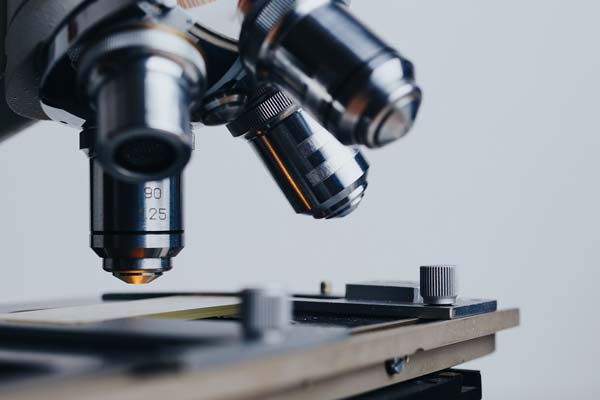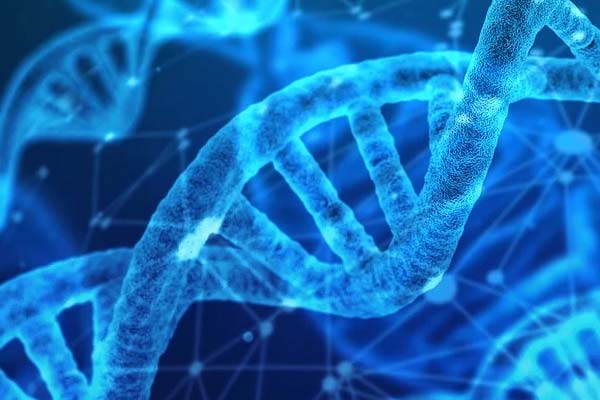IGCSE Biology: A Comprehensive Guide to Exam Preparation
IGCSE Biology is a course designed to help learners understand the biological world around them and to develop an informed interest in science and scientific developments.
The course comprehensively addresses various biological concepts, including the characteristics and classification of living organisms, the organization of the organism, movement in and out of cells, biological molecules, enzymes, plant nutrition, human nutrition, transport in plants, and more.
Cambridge IGCSE Biology (0610) is a popular variant of the IGCSE Biology course. It is designed for learners who want to study biology at a higher level and is widely recognized by universities and employers worldwide.
Blending knowledge and skills from Cambridge IGCSE Biology establishes a strong base for future academic pursuits.
The course is divided into several units, each covering a specific topic in biology. Key subjects encompass cell biology, genetics, ecology, and evolution. Learners will also develop practical skills like experimental design, data analysis, and scientific communication.
Learners will be encouraged to develop their critical thinking and problem-solving skills throughout the course. They will be asked to analyze and evaluate scientific information and to apply their knowledge to real-world situations.
By the end of the course, learners should be able to understand and appreciate the complexity and diversity of the biological world and recognize the importance of biology in everyday life.
Characteristics and Classification of Living Organisms
Living organisms are characterized by specific features that differentiate them from non-living things. These features include growing and reproducing, responding to stimuli, and maintaining homeostasis. Living organisms are also composed of cells, the basic life unit.
Classification of living organisms is organizing them into groups based on their characteristics. This helps to understand the relationships between different organisms and their evolutionary history.
The classification system used today was developed by Carl Linnaeus in the 18th century and is based on the binomial nomenclature, which assigns each organism a unique two-part name.
Organisms are categorized into five kingdoms: Monera, Protista, Fungi, Plantae, and Animalia. These kingdoms are then subdivided into smaller groups based on shared traits. For instance, animals are grouped into phyla within the Animalia kingdom based on common characteristics.
🌟 Hey Students! 🚀 Ready for the ultimate experience? Join us on Studentsinside.com's Facebook, YouTube, WhatsApp, and LinkedIn. Click now for tips, fun, and success vibes! 🌈✨ #StudentLife #JoinUs
The characteristics used to classify living organisms include their cell type, mode of nutrition, and body organization.
For example, organisms can be classified as prokaryotes or eukaryotes based on the presence or absence of a nucleus in their cells. They can also be classified as autotrophs or heterotrophs based on their mode of nutrition.
Biological Molecules and Enzymes
Biological molecules are vital for the operations of living organisms, serving as foundational elements of life and participating in crucial functions like growth, tissue mending, cell membrane construction, and energy supply. Four primary categories of biological molecules exist: carbohydrates, proteins, nucleic acids, and lipids.
Carbohydrates consist of carbon, hydrogen, and oxygen, storing energy and forming cell wall structures. Lipids, having higher carbon and hydrogen ratios, function as energy reserves and insulation.
Proteins, consisting of linked amino acid chains, play diverse roles, including enzymatic activities, hormonal signaling, and structural support. Nucleic acids comprise nucleotide units and are pivotal for genetic information storage and transfer.
Enzymes, specialized biological molecules, expedite chemical reactions within organisms. They are specific to particular reactions and integral to digestion, respiration, and DNA replication—factors like temperature, pH, and substrate concentration influence enzyme functionality.
Enzymes operate by reducing the energy needed to initiate chemical reactions. This occurs through binding with substrates, the molecules they act upon, resulting in an enzyme-substrate complex that transforms into products. Enzymes remain unaltered and reusable after the reaction.

Nutrition
Nutrition involves exploring nutrient acquisition and utilization by organisms, serving as a crucial biological factor that underpins living’s growth, development, and upkeep. This field encompasses two primary categories: plant and human nutrition.
Plant Nutrition
Plants need a range of nutrients for their growth and survival, which they obtain from the soil and the atmosphere. The primary macronutrients they need are nitrogen, phosphorus, and potassium. Essential macronutrients like calcium, magnesium, and sulfur are also necessary.
In addition to macronutrients, plants also require micronutrients, which are needed in smaller quantities. These include iron, manganese, zinc, and copper. Plants obtain these nutrients through their roots, which absorb water and nutrients from the soil.
Human Nutrition
Human nutrition delves into how the body acquires and uses nutrients from food, vital for overall health. A well-rounded diet is imperative, encompassing fruits, vegetables, whole grains, lean proteins, and healthy fats.
For optimal functioning, the body relies on six key nutrients: carbohydrates for energy, proteins for growth and repair, fats for energy reserves and insulation, and vitamins and minerals crucial for metabolism.
Water, equally vital, regulates temperature, nutrient transport, waste removal, and joint lubrication. Staying adequately hydrated is paramount to prevent dehydration.
Transport Systems
Transport systems are essential for the survival of living organisms. These systems allow for the movement of vital substances such as water, nutrients, gases, and waste products throughout the organism’s body. In biology, transport systems are divided into two categories: plant transport and animal transport.
Transport in Plants
Plants possess a sophisticated transport system comprising two vital vascular tissues: xylem and phloem. Xylem facilitates the conveyance of water and minerals from roots to leaves, while phloem transports sugars and organic compounds from leaves to other plant parts.
Xylem’s water and mineral movement stems from transpiration, the leaf-evaporation-driven process. This generates negative pressure in the xylem, drawing nutrients and water from roots. Phloem, on the other hand, propels sugars and organics via energy-demanding active transport mechanisms.
Transport in Animals
Animals have a circulatory system that conveys oxygen, nutrients, hormones, and waste. This system contains the heart, blood vessels, and blood.
The heart, a muscular organ, propels blood through vessels. Two animal circulatory systems exist: open and closed.
In an open circulatory system, the blood is not always contained within blood vessels and flows freely through the body cavity. In a closed circulatory system, the blood is always contained within blood vessels.
In mammals, the circulatory system is closed with two pulmonary and systemic circuits. The pulmonary circuit carries deoxygenated blood from the heart to the lungs, picking up oxygen and returning it to the heart.
The systemic circuit transports oxygenated blood from the heart to the body’s tissues, providing oxygen nutrients and collecting waste products.
Disease and Immunity
Disease results from compromised health due to pathogens or factors like genetics, environment, and lifestyle. Pathogens encompass viruses, bacteria, fungi, and parasites, which induce disease.
The immune system, made up of cells, organs, and tissues, teams up to guard against germs and harmful things. It identifies and eradicates these by activating various immune cells and molecules.
Immunity is an organism’s resistance to infection or disease, gained naturally or artificially. Natural immunity arises from pathogen exposure or maternal antibody transfer. Artificial immunity is obtained through vaccination or immunoglobulin administration.
Diseases and immunity are closely linked. The immune system safeguards against disease by destroying pathogens but can also misfire, causing autoimmune diseases like rheumatoid arthritis, lupus, and multiple sclerosis.
Respiration and Gas Exchange
Cellular respiration extracts energy from glucose, requiring oxygen and producing carbon dioxide. Gas exchange enables oxygen uptake and carbon dioxide removal in the body.
In humans, the respiratory system consists of specific organs and structures used for gas exchange. The lungs and associated structures make up this organ system. The respiratory system includes the trachea, bronchi, bronchioles, and alveoli.
The trachea, bronchi, and bronchioles transport air to and from the alveoli, which are the site of gas exchange.
During inhalation, the trachea, bronchi, and bronchioles draw air into the lungs. This is facilitated by the contraction of the diaphragm and intercostal muscles, which enlarges the chest cavity, allowing air to enter. Conversely, the diaphragm and intercostal muscles relax during exhalation, reducing the chest cavity’s volume and expelling air.
Alveoli, tiny air sacs in the lungs, facilitate gas exchange. Oxygen moves from the alveolar air into the bloodstream, carried by red blood cells to body cells. Simultaneously, carbon dioxide moves from body cells into the bloodstream, where red blood cells transport it back to the lungs.
Respiration comes in two forms: aerobic and anaerobic. Aerobic respiration occurs within cells, releasing energy from glucose with oxygen. On the other hand, anaerobic respiration can occur without oxygen.
However, anaerobic respiration produces less energy than aerobic respiration and produces lactic acid as a waste product, which can lead to muscle fatigue.
Coordination and Response
Coordination and response are vital for the functioning of living organisms, enabling interaction with the surroundings and reactions to stimuli. Coordination integrates body systems to uphold homeostasis, while response entails tailored reactions to stimuli.
The human nervous system is pivotal for coordination and response. Comprising the central nervous system (CNS) and peripheral nervous system (PNS), it encompasses the brain, spinal cord, and connecting nerves throughout the body.
The nervous system coordinates and controls various bodily functions, including movement, sensation, and behavior. It transmits electrical signals, or nerve impulses, along neurons. These impulses are transmitted across synapses, which are the junctions between neurons.
Response, on the other hand, involves specific reactions to stimuli. In humans, response can be voluntary or involuntary. Voluntary responses are under conscious control, while involuntary responses are automatic and not under conscious control.
Examples of involuntary responses include the contraction of the pupils in response to changes in light and the regulation of heart rate and breathing. Voluntary responses include movements such as walking and talking.
Excretion and Homeostasis
Excretion and homeostasis are interdependent vital processes in the human body, collaborating to uphold a balanced internal environment. Homeostasis ensures stability within the body’s milieu. In contrast, excretion focuses on eliminating waste substances from the body.
Various mechanisms, including the nervous system and hormones, regulate homeostasis. For example, the hypothalamus in the brain detects water levels in the blood and releases varying levels of antidiuretic hormone (ADH), which travels to the kidney.
If there is a lot of ADH, more water will be reabsorbed into the blood, which changes the water levels in urine. This helps to maintain the water balance in the body.
Excretion entails eliminating waste products from the body. Key excretory organs include the kidneys, liver, and lungs. The kidneys eliminate waste like urea, excess salts, and water, expelling them as urine. The liver removes toxins and waste via bile, while the lungs expel respiratory waste, notably carbon dioxide.
Reproduction
Reproduction in Plants
Plants mainly reproduce sexually, which involves the fusion of the male gamete (pollen) and the female gamete (ovule). This process is known as fertilization, and it leads to seed development. The seed, in turn, grows into a new plant.
In addition to sexual reproduction, plants can also reproduce asexually. This involves the production of new plants from vegetative structures such as stems, roots, and leaves. Some plants, such as strawberries, produce runners that grow into new plants.
Reproduction in Humans
Humans engage in sexual reproduction, wherein a male sperm cell combines with a female egg cell through fertilization. This event commonly takes place within the fallopian tube of the female reproductive system.
During sexual intercourse, the male ejaculates semen, which contains sperm cells. The sperm cells travel through the female reproductive system until they reach the egg cell. If fertilization occurs, the egg will implant in the uterus lining and develop into a fetus.
Humans can also use various forms of contraception to prevent pregnancy. Some examples include condoms, birth control pills, and intrauterine devices (IUDs).

Genetics
Genetics involves the exploration of genes, heredity, and genetic diversity in organisms. This integral biological field elucidates the transmission of traits across successive generations.
Chromosomes, Genes and Proteins
Chromosomes are elongated DNA strands that transmit genetic information across generations: genes, smaller DNA segments, house instructions for creating proteins vital to biological functions.
Proteins, fundamental to life, undertake diverse roles, including enzyme-driven reactions and structural support for cells and tissues.
Variation and Selection
Genetic variation refers to a population’s range of genetic information stemming from DNA mutations and gene mixing during reproduction. This variation serves as the foundation for evolution, the progression of changes in populations of organisms over time.
Natural selection drives evolution by favoring organisms that are well-suited to their environment. Through this process, those better adapted have higher chances of survival and reproduction, resulting in the gradual accumulation of advantageous traits within a population.
Variation and selection are essential concepts in biology, as they help us understand how populations of organisms adapt to changing environments.
Organisms and Their Environment
In the study of biology, a pivotal focus lies in comprehending the interplay between organisms and their surroundings. An ecosystem embodies a union of living entities and their inanimate habitat, collectively upholding equilibrium.
Organisms can be sorted into two primary groups: producers and consumers. Producers harness organic nutrients, often via photosynthesis powered by sunlight.
Plants and algae serve as prime examples. Meanwhile, consumers derive energy by consuming fellow organisms, and these consumers can be categorized as primary, secondary, or tertiary.
Ecosystems channel energy through food chains, showcasing the passage of energy from producers to successive organisms. This sequence starts with producers and assigns organisms their trophic level within food webs, biomass pyramids, or number pyramids.
Survival and growth hinge on the environment, encompassing temperature, water, light, and soil. Each organism holds specific prerequisites for survival, such as a temperature niche or a requisite water volume.
Human Influences on Ecosystems
Human activities exert a substantial influence on ecosystems. While certain effects are beneficial, like safeguarding endangered species, numerous others are detrimental, resulting in ecosystem degradation and destruction.
One of the most significant human influences on ecosystems is habitat destruction. This can occur due to expanding agricultural land, livestock production, and housing.
Extracting natural resources, such as minerals and timber, can also contribute to habitat destruction. As a result, many species lose their habitats and are forced to migrate or become extinct.
Another human influence on ecosystems is the alteration of food webs and food chains. Humans can harm habitats by introducing non-native species, overfishing, and hunting.
These activities can cause a decline in the populations of certain species, which can have a ripple effect throughout the ecosystem.
Human activities can also lead to the pollution of ecosystems. Marine pollution, for example, can be caused by oil spills, plastic waste, and chemical runoff from agricultural fields. This pollution can harm marine life and disrupt the ecosystem’s delicate balance.
Although human activities can adversely affect ecosystems, they can also yield positive outcomes. Establishing national parks and protected zones, for instance, aids in safeguarding ecosystems and endangered species.
Moreover, adopting sustainable agricultural and fishing techniques mitigates the detrimental repercussions of human intervention on ecosystems.
Biotechnology and Genetic Modification
Biotechnology employs living organisms or their derivatives to enhance products or processes for particular purposes. Genetic modification involves changing an organism’s genetic material to achieve a desired trait.
Biotechnology and genetic modification have revolutionized the field of biology, and their applications have extended to various fields, including medicine, agriculture, and industry.
Genetic modification involves the manipulation of DNA to produce organisms with desirable traits. This process can increase crop yield, improve food’s nutritional value, and produce medicines and vaccines.
Genetic modification can be achieved through various techniques, including gene splicing, gene editing, and gene transfer.
Biotechnology has greatly contributed to advancing healthcare by enabling the creation of groundbreaking drugs and therapies, leading to transformative treatment approaches for diseases like cancer, HIV/AIDS, and diabetes.
Biotechnology has also led to the development of new diagnostic tools and techniques that have improved the accuracy and speed of disease diagnosis.
In agriculture, biotechnology has been used to develop crops resistant to pests and diseases, have improved nutritional value, and can grow in adverse conditions. Biotech crops have helped to increase food production, reduce the use of pesticides and herbicides, and enhance the sustainability of agriculture.
Practical Skills and Examination
Practical skills are a fundamental part of Cambridge IGCSE Biology. The practical skills and support section at the beginning of the coursebook introduces students to the basic skills that will form the foundation of their learning, helping build their confidence with skills that will recur frequently in the IGCSE course, such as drawing diagrams and identifying variables.
The coursebook also provides:
- In-depth coverage of the Cambridge IGCSE Biology syllabus.
- Focusing on critical experiments.
- Interpreting data.
- Evaluating results.
Cambridge IGCSE Biology emphasizes the importance of practical skills in assessing students. The practical examination tests students’ ability to plan, carry out, and evaluate experimental work. The examination consists of two parts: Paper 4 and Paper 5.
Paper 4 is a practical test that assesses students’ ability to carry out experimental work. Students will be assessed on their ability to accurately plan, carry out, and record their observations. The practical test is worth 30% of the total marks for the IGCSE Biology examination.
Paper 5 is a theory paper that assesses students’ understanding of experimental work. The paper will test students’ knowledge of experimental techniques and their ability to interpret and evaluate experimental data. The theory paper is worth 50% of the total marks for the IGCSE Biology examination.
To prepare for the practical examination, students should practice conducting experiments, recording their observations accurately, and evaluating their results. They should also be familiar with experimental techniques and be able to interpret and evaluate experimental data.
Study Techniques for IGCSE Biology
Effective study methods are crucial for achieving success in IGCSE Biology. Here are some techniques that can help students better understand and retain the material:
Active Reading and Note-Taking
Active reading involves engaging with the text by asking questions, making connections, and summarizing key points. Students should take notes as they read, highlighting important information and writing down questions or comments.
Mind Mapping Key Concepts
Mind mapping is a visual procedure for organizing information, especially for comprehending essential IGCSE Biology concepts. Students utilize colors, shapes, and symbols to represent various ideas.
Utilizing Flashcards for Memorization
Flashcards effectively aid in committing essential terms and concepts to memory. Students can systematically enhance their comprehension through regular review by crafting flashcards featuring the term or concept on one side and its corresponding definition or explanation on the opposite side.
Importance of Consistent Revision and Spaced Repetition
Consistent revision and spaced repetition are essential for the long-term retention of information. Students should review their notes and flashcards regularly, spacing out their review sessions over time. This can help them retain the material more effectively.
Resources and Support
For those studying Cambridge IGCSE Biology (0610), various resources and support are available to help with exam preparation and understanding the subject matter.
One of the most valuable resources for students is past papers. These papers, available from 2018 to the most recent session, provide an excellent opportunity for students to practice answering exam-style questions and assess their progress. In addition to past papers, specimen papers, and marking schemes are available to aid exam preparation.
For those who prefer digital access, the Cambridge School Support Hub offers a range of resources and support for IGCSE Biology.
This includes content selection, tips for handling data, glossary, and summaries. The Hub also provides resources for active learning, self-assessment, and accessible language to help learners of English as a second language.
The Cambridge IGCSE Biology team has also developed a podcast series to provide additional support and insight into the subject matter. These podcasts cover various topics, including diseases and immunity, and offer exam-style questions and tips for effective studying.
Preparing for the IGCSE Biology Exam
The IGCSE Biology exam comprehensively assesses a student’s understanding of the biological world. It covers various topics, from basic principles and concepts to current biology applications. To succeed in this exam, students must have a solid understanding of the subject matter and be well-prepared for the exam format and structure.
Strategies for Exam Success
Overview of the Exam Format and Structure
The IGCSE Biology exam comprises two papers: Paper 1 and Paper 2. Paper 1 is a multiple-choice test focusing on subject knowledge. At the same time, Paper 2 is a written assessment gauging students’ capacity to apply knowledge to diverse scenarios and respond to various question formats.
Time Management Strategies During the Exam
During the exam, time management is crucial. Students should allocate their time wisely to ensure enough time to answer all the questions.
It is essential to read the instructions carefully and understand the question before attempting to answer it. Students should also monitor the time and plan their answers accordingly.
Practice with Past Papers and Mock Exams
One of the best ways to prepare for the IGCSE Biology exam is to practice with past papers and mock exams. This will give students an idea of the exam format and structure, the types of questions that may be asked, and the time constraints they will face.
Tips for Answering Different Question Types
To succeed in the IGCSE Biology exam, students need to be able to answer different question types effectively. For multiple-choice questions, students should carefully read the question and all the answer options before selecting the correct answer.
For short answer questions, students should provide concise and accurate answers that address all parts of the question. For essay questions, students should plan their answers carefully, organize their thoughts, and provide clear and concise explanations.
Effective Strategies for the Day Before the Exam
The day before the exam, students should concentrate on reviewing notes and completing practice with previous papers. It’s crucial to prioritize a good night’s sleep and a nutritious breakfast to guarantee they enter the exam well-rested and full of energy.
Techniques to Manage Stress and Anxiety
Stress and anxiety are common during exams but can be appropriately managed. Students should take deep breaths, stay calm, and focus on the task. They should also avoid overthinking and stay positive.
Importance of a Good Night’s Sleep and a Healthy Breakfast
Successful exam performance hinges on a restful sleep and a nourishing breakfast. To excel, students should aim for approximately eight hours of sleep and consume a nutritious breakfast to energize themselves before the exam.








